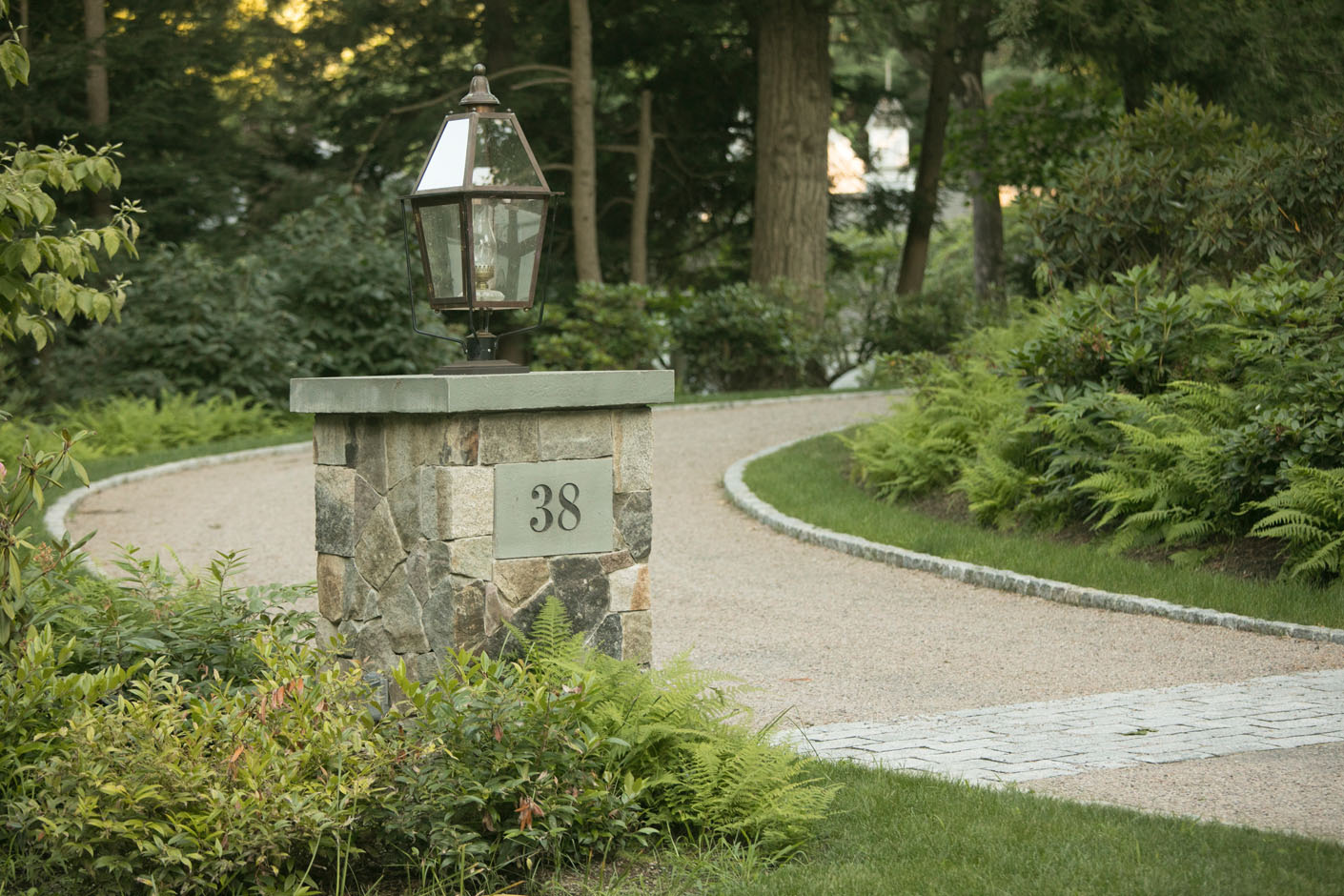The approach to a home – or arrival sequence – is made up of memorable moments that create a sense of anticipation for what lies ahead. The sequence occurs from varying points from the street to the home’s front door, drawing one into the property with meaningful, visual moments both subtle or grand.

A carefully choreographed arrival sequence begins at the drive portal where one enters the private road. There are several ways to define this portal depending on the home’s aesthetic and whether one enters by foot or automobile. Often, we mark our client’s drive portal with stone pillars or a beautiful gate. This clearly denotes the transition between public and private space – evoking emotional anticipation as one enters the property.


A pedestrian archway through a garage or guesthouse is another example of an entry portal that effectively separates the public and private realm. The building through which one walks serves as a foil, creating privacy from the street, while the archway visually draws one through the property.


When creating a home’s arrival sequence, our goal is to create a meaningful ensemble of buildings. By breaking up the program – particularly if it is very large – we create moments of delight along the way. Dividing up the architecture also helps from a practical standpoint if we are designing a program on a tighter or more challenging site.

To help frame the arrival, we often design a sequence where smaller architectural elements are presented first, followed by the largest element, the main house. Seeing the home in the distance – whether a glimpse of the front door or a portion of the façade – helps to increase the overall level of anticipation.

After the portal, we next consider the corridor, which is the space between the entry and the motor court. Its design is influenced by the home’s level of formality, the neighborhood, and its geographic location.

If, for example, we are designing a homeowner’s second, seasonal home on Martha’s Vineyard, conservation issues and practicality come into play. Here, where zoning often dictates design, we may choose to create a corridor made of classic pea stone. With its water-permeable surface, it is environmentally friendly (meeting conservation requirements) and requires less year-round maintenance than asphalt (no resurfacing or repair or weathered cracks). For some homeowners, pea stone also provides an added sensory benefit: the unique sound the gravel makes when entering the driveway feels distinctly comforting. Adding a cobblestone apron or edging can help define the border in a countrified, seaside manner.

Alternately, if we are designing a year-round home where it snows, creating an asphalt drive corridor, or one made with aggregate pea stone (the pea stone is “rolled” into the asphalt) is the more practical choice for plowing purposes. Another benefit of asphalt is the ability to embed a heating system within the driveway, making snow removal that much easier.

The carefully designed drive corridor ultimately leads to the motor court, which brings cars to the home’s front entrance. Depending on the property’s aesthetic, we may mark this entrance with additional pillars, or even design a covered motor entrance or porte cochere – creating a grand and timeless arrival.


When we design an arrival sequence, we think about human emotions and the anticipation that comes with entering a property. A thoughtfully choreographed arrival plays on those emotions by generating excitement and creating memorable moments of surprise and delight along the way.